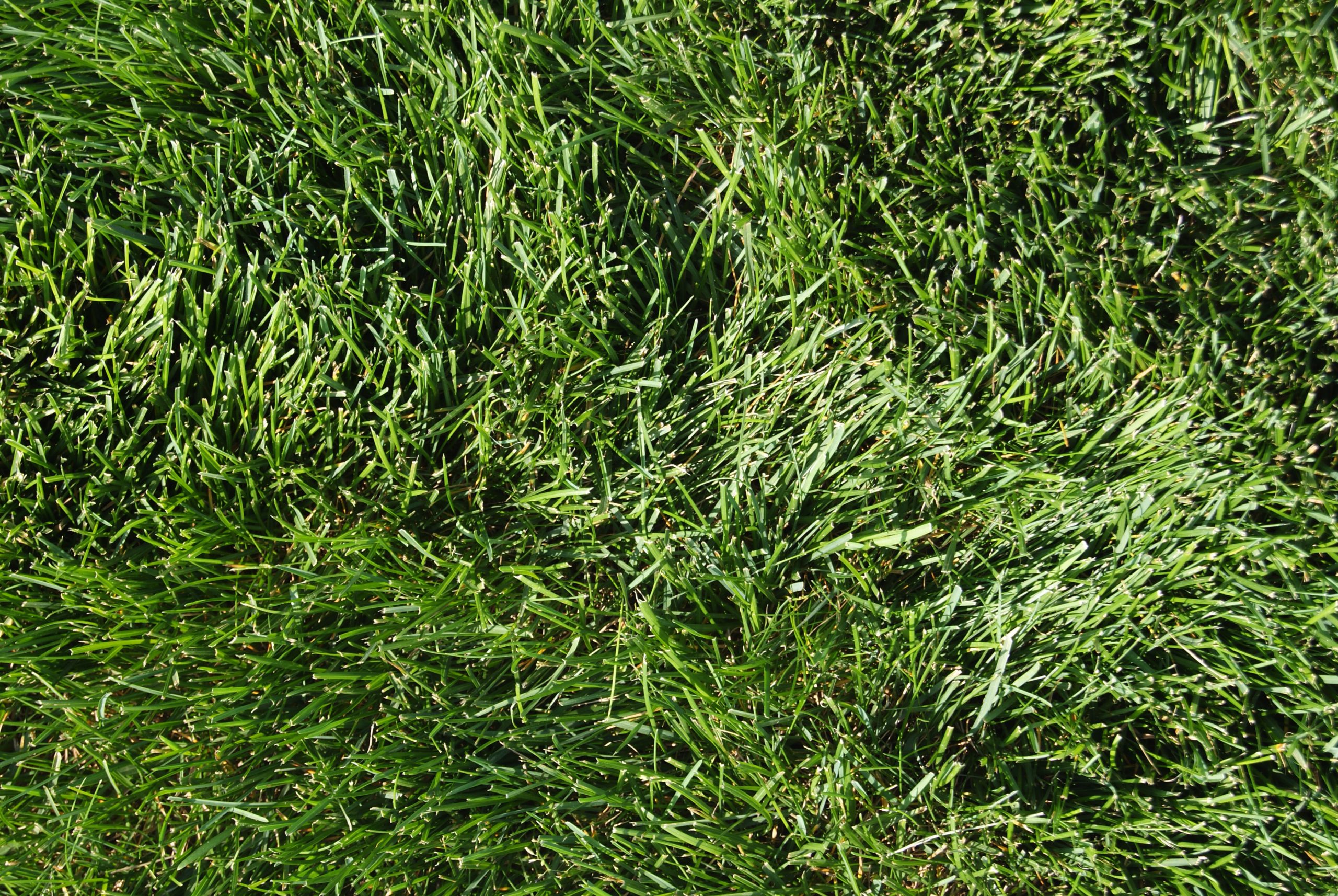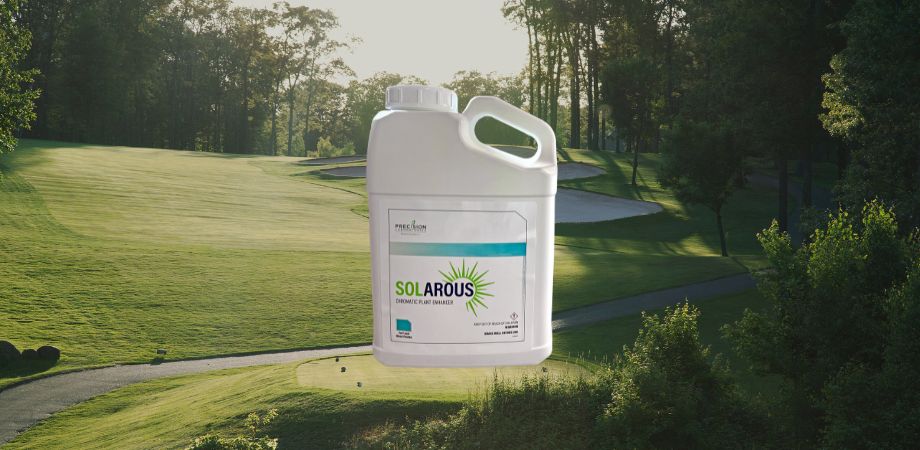Perhaps the best-known turfgrass species, Kentucky bluegrass (Poa pratensis) is popular for lawns, golf courses, and sports fields. As its name suggests, Kentucky bluegrass has a blue-green color that contributes to its appeal. It’s also known for its lush, fine to medium texture that makes it comfortable for bare feet and athletes alike.
Kentucky bluegrass isn’t just a pretty face, though. It also has strong traffic tolerance and the ability to repair itself quickly. This is due to its aggressive rhizomatous growth habit, which spreads underground roots and forms dense, thick turf. These rhizomes help Kentucky bluegrass fill in damaged spots with ease.
One caveat to the strength of Kentucky bluegrass is that it takes a while to mature. This species is notoriously slow to germinate, and its seedlings are not traffic tolerant like the mature plants are. Kentucky bluegrass has one of the longest germination times, at 14 to 30 days. Despite its slow germination time, though, this species does germinate well from seed. Germination generally occurs at soil temperatures between 50°F and 65°F.
Because of its slow germination and fragile seedlings, Kentucky bluegrass will establish best when planted during periods of light traffic. Fall and dormant winter seedings are the best approaches for this species because it needs plenty of time to establish before intense summer temperatures and traffic. As a cool-season grass, Kentucky bluegrass grows the most in the spring and fall when temperatures are lower.
Of the common cool-season grasses in the US, Kentucky bluegrass has the best cold tolerance. This makes it a good choice for Northern areas with harsher winters. Conversely, Kentucky bluegrass has a low heat tolerance. It can go dormant during intense heat and drought conditions in the summer. However, it recovers well from summer dormancy in the same way that it recovers from traffic stress.
In terms of maintenance, Kentucky bluegrass is more needy than turf-type tall fescue and perennial ryegrass. Although it has extensive rhizomatous roots, they are relatively shallow. For this reason, it requires high levels of irrigation, especially during the summer months, to maintain a green color. Deep and infrequent irrigation helps encourage Kentucky bluegrass roots to grow deeper.
Kentucky bluegrass actually prefers sun to shade, although it can tolerate shade as well. It tolerates shade best in conjunction with ample irrigation. At the same time, some Kentucky bluegrass cultivars are adapted to drought and can handle low irrigation as long as they have plenty of sunlight.
We carry a variety of Kentucky bluegrass seed options, including blends with perennial ryegrass. Advanced HGT and 365ss are two that perform well in the NTEP trial after trial. Advanced HGT is a hearty bluegrass seed blend that is easy to grow, fast to establish, and resistant to disease. 365ss, unlike most Kentucky bluegrass, germinates and establishes quickly. If drought tolerance is the largest consideration, TWCA Kentucky bluegrass is a fantastic option. The grasses in this blend are proven to need up to 40% less water than a typical bluegrass. They will stay greener longer without water and will bounce back quickly at the end of a drought. All of these are available coated with Foliar-Pak XCD for maximum seedling growth and plant health.
Contact your sales rep for help selecting the right seed for your situation, and browse all of our seed options here.












